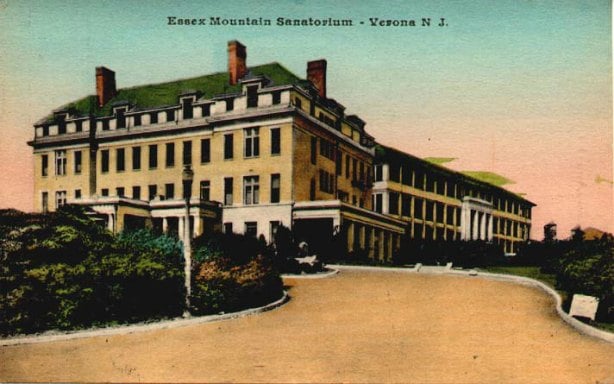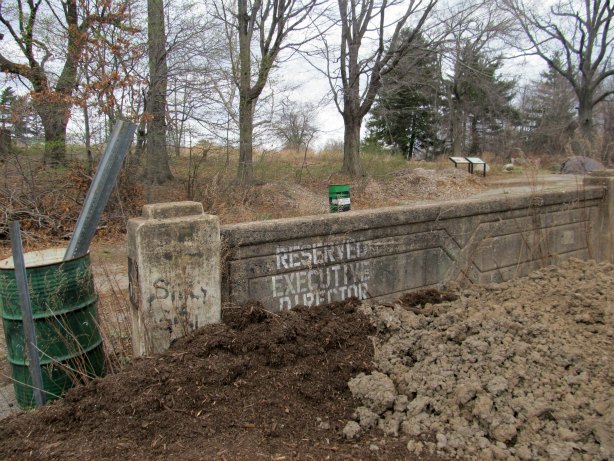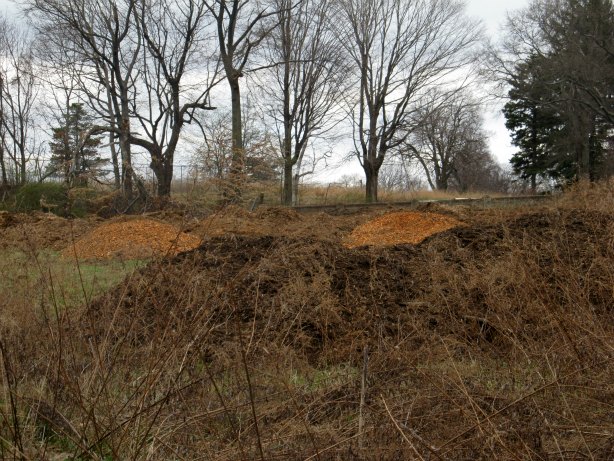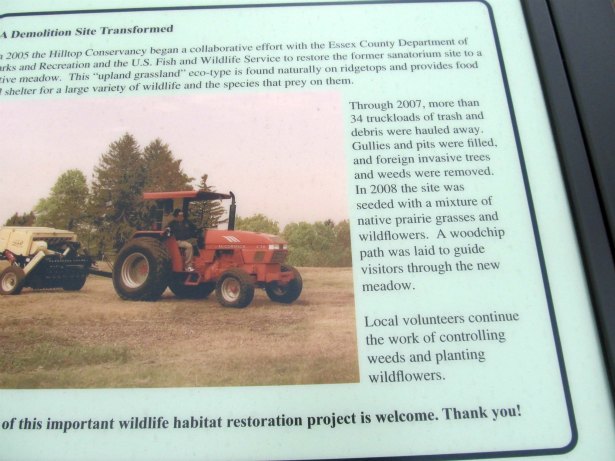The Halloween weekend snowstorm last year devastated the landscape in much of residential Verona. But it may have saved a key piece of open space: The Hilltop.
Over the last five months, downed tree limbs from across Verona have been mulched and transported to the western ridge of town, beginning a three-acre meadow that will help restore the ecology of the Hilltop to what it was more than 100 years ago.

In 1907, as Verona was being formed, tuberculosis was raging in Essex County. Before the advent of modern antibiotics there was only one cure: A more healthful environment. And so the county built a sanatorium on the Hilltop. It was village, really, larger than Verona would be for many years. In its heyday, the Essex Mountain Sanatorium was home to some 4,000 patients and workers. Buildings and roads were created, covering the Hilltop with cement and asphalt.

The last patient was released in 1977, and in 1994 the county began to tear the buildings down. A development compromise turned much of the area into open space for the county and Verona, but it has fallen to the non-profit Hilltop Conservancy to turn that open space back into green space.
It has already tackled a 10-acre site north of the water tower, but much remains to be done. It got a contractor to punch holes in the asphalt for drainage, but the next steps were a question mark: It would have been difficult to come up with the dollars to rip out the roads and foundations in a good economy; in a recession, it was impossible. And then the storm created an opportunity: Tons of mulch that could be put down over the hardscape. Tons of mulch that could decompose into the basis of a new meadow.

“After the October storm, I wrote to town manager Joe Martin and asked, ‘can we make lemonade out of those lemons?’.” says the Hilltop Conservancy’s treasurer, Theresa Trapp.
While other towns have had to pay to have the tree waste created by the October storm carried away, Verona has used its town trucks to carry mulch to the Hilltop–5,500 cubic yards of it in all. Trapp thought the conservancy would then have to apply for grants to buy topsoil, a process that would take three to four years.

But mulch wasn’t the only thing Verona had in excess. As a result of work to scrape out ground for new sidewalks and new trees over the years, the town had an abundance of dirt in the Ozone Avenue maintenance yard as well. In the last few weeks, it has brought that dirt to the Hilltop too. On April 14 and 15, as part of the Hilltop Conservancy’s annual cleanup, volunteers will rake the dirt smooth and seed it with grass and wildflowers. And then they will let Mother Nature work her magic for a few years until the land is ready for final restoration.

“The site suffered from use and abuse and neglect for over a hundred years,” says Trapp, “so for us to restore it in anything less than five years would be optimistic.” While the new meadow won’t be able to support trees–the cement and asphalt will stymie their root growth–meadows are needed just as much, says Trapp. “Open meadow habitat is quickly disappearing across the eastern seaboard.” The result is fewer places for pollinating insects to do their work, and less pollination of native plants, shrubs and trees, fewer places for native birds to rest and feed.
Tomorrow, Saturday March 31, you can take a hike with the Hilltop Conservancy to see the work that the group has been doing on the Hilltop. Volunteers will meet at 8:50 a.m. at the Linn Drive baseball diamond near the Verona Community Center and take you on a 2-mile hike beginning at 9 a.m. The Conservancy says the guided hike is appropriate for adults and children, and will take about 90 minutes.


What a great story! We recently hiked up to the hilltop and saw the mounds of mulch and holes and wondered what it was all about. Kudos to the Hilltop Conservancy and Verona Township!
For anyone who has never been to the Hilltop before, the hike planned for Saturday morning is a great way to start. Meet at the Linn Drive baseball field at 8:50 a.m. It’s free and despite being called a “hike”, it’s fairly easy.
This sounds like an excellent example of “out of the box” thinking. Well done.